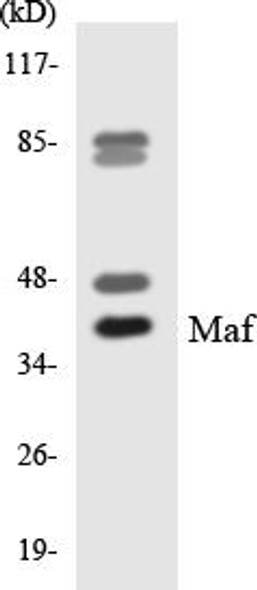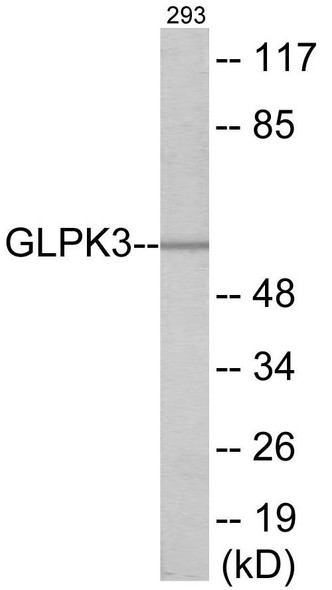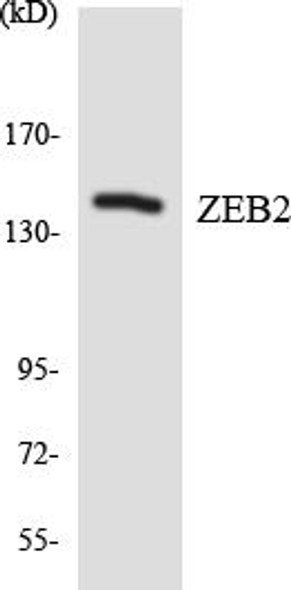KNTC2 Colorimetric Cell-Based ELISA
- SKU:
- CBCAB00926
- Product Type:
- ELISA Kit
- ELISA Type:
- Cell Based
- Research Area:
- Cell Cycle
- Reactivity:
- Human
- Mouse
- Detection Method:
- Colorimetric
Description
KNTC2 Colorimetric Cell-Based ELISA
The KNTC2 Colorimetric Cell-Based ELISA Kit is a cutting-edge tool for analyzing the expression levels of Kinetochore protein KNTC2 in cell lysates. This kit offers high sensitivity and specificity, allowing for accurate and reliable data for various research applications.Kinetochore protein KNTC2 is a key player in the process of chromosome segregation during cell division, making it a vital target for studying cell cycle regulation and identifying potential therapeutic targets for cancer and other diseases.
With the KNTC2 Colorimetric Cell-Based ELISA Kit, researchers can confidently measure KNTC2 levels in cell samples, leading to valuable insights into cellular processes and disease mechanisms.
| Product Name: | KNTC2 Colorimetric Cell-Based ELISA |
| Product Code: | CBCAB00926 |
| ELISA Type: | Cell-Based |
| Target: | KNTC2 |
| Reactivity: | Human, Mouse |
| Dynamic Range: | > 5000 Cells |
| Detection Method: | Colorimetric 450 nmStorage/Stability:4°C/6 Months |
| Format: | 96-Well Microplate |
The KNTC2 Colorimetric Cell-Based ELISA Kit is a convenient, lysate-free, high throughput and sensitive assay kit that can detect KNTC2 protein expression profile in cells. The kit can be used for measuring the relative amounts of KNTC2 in cultured cells as well as screening for the effects that various treatments, inhibitors (ie siRNA or chemicals), or activators have on KNTC2.
Qualitative determination of KNTC2 concentration is achieved by an indirect ELISA format. In essence, KNTC2 is captured by KNTC2-specific primary antibodies while the HRP-conjugated secondary antibodies bind the Fc region of the primary antibody. Through this binding, the HRP enzyme conjugated to the secondary antibody can catalyze a colorimetric reaction upon substrate addition. Due to the qualitative nature of the Cell-Based ELISA, multiple normalization methods are needed:
| 1. | A monoclonal antibody specific for human GAPDH is included to serve as an internal positive control in normalizing the target absorbance values. |
| 2. | Following the colorimetric measurement of HRP activity via substrate addition, the Crystal Violet whole-cell staining method may be used to determine cell density. After staining, the results can be analysed by normalizing the absorbance values to cell amounts, by which the plating difference can be adjusted. |
| Database Information: | Gene ID: 10403, UniProt ID: O14777, OMIM: 607272, Unigene: Hs.414407 |
| Gene Symbol: | NDC80 |
| Sub Type: | None |
| UniProt Protein Function: | HEC1: plays an essential role in chromosome segregation by interacting through its coiled-coil domains with several proteins that modulate the G2/M phase. Phosphorylation by Nek2 is essential for faithful chromosome segregation. Required for the recruitment of Mps1 kinase and Mad1/Mad2 complexes to kinetochores. |
| UniProt Protein Details: | Protein type:Cell cycle regulation Chromosomal Location of Human Ortholog: 18p11.32 Cellular Component: chromosome, pericentric region; cytosol; kinetochore; membrane; nucleus Molecular Function:identical protein binding; protein binding; structural constituent of cytoskeleton Biological Process: attachment of spindle microtubules to kinetochore; attachment of spindle microtubules to kinetochore during mitosis; chromosome segregation; establishment of mitotic spindle orientation; mitosis; mitotic sister chromatid segregation; mitotic spindle organization and biogenesis; sister chromatid cohesion |
| NCBI Summary: | This gene encodes a component of the NDC80 kinetochore complex. The encoded protein consists of an N-terminal microtubule binding domain and a C-terminal coiled-coiled domain that interacts with other components of the complex. This protein functions to organize and stabilize microtubule-kinetochore interactions and is required for proper chromosome segregation. [provided by RefSeq, Oct 2011] |
| UniProt Code: | O14777 |
| NCBI GenInfo Identifier: | 74735330 |
| NCBI Gene ID: | 10403 |
| NCBI Accession: | O14777.1 |
| UniProt Secondary Accession: | O14777,Q6PJX2, |
| UniProt Related Accession: | O14777 |
| Molecular Weight: | 73,913 Da |
| NCBI Full Name: | Kinetochore protein NDC80 homolog |
| NCBI Synonym Full Names: | NDC80, kinetochore complex component |
| NCBI Official Symbol: | NDC80 |
| NCBI Official Synonym Symbols: | HEC; HEC1; TID3; KNTC2; HsHec1; hsNDC80 |
| NCBI Protein Information: | kinetochore protein NDC80 homolog |
| UniProt Protein Name: | Kinetochore protein NDC80 homolog |
| UniProt Synonym Protein Names: | Highly expressed in cancer protein; Kinetochore protein Hec1; HsHec1; Kinetochore-associated protein 2; Retinoblastoma-associated protein HEC |
| Protein Family: | Kinetochore protein |
| UniProt Gene Name: | NDC80 |
| UniProt Entry Name: | NDC80_HUMAN |
| Component | Quantity |
| 96-Well Cell Culture Clear-Bottom Microplate | 2 plates |
| 10X TBS | 24 mL |
| Quenching Buffer | 24 mL |
| Blocking Buffer | 50 mL |
| 15X Wash Buffer | 50 mL |
| Primary Antibody Diluent | 12 mL |
| 100x Anti-Phospho Target Antibody | 60 µL |
| 100x Anti-Target Antibody | 60 µL |
| Anti-GAPDH Antibody | 60 µL |
| HRP-Conjugated Anti-Rabbit IgG Antibody | 12 mL |
| HRP-Conjugated Anti-Mouse IgG Antibody | 12 mL |
| SDS Solution | 12 mL |
| Stop Solution | 24 mL |
| Ready-to-Use Substrate | 12 mL |
| Crystal Violet Solution | 12 mL |
| Adhesive Plate Seals | 2 seals |
The following materials and/or equipment are NOT provided in this kit but are necessary to successfully conduct the experiment:
- Microplate reader able to measure absorbance at 450 nm and/or 595 nm for Crystal Violet Cell Staining (Optional)
- Micropipettes with capability of measuring volumes ranging from 1 µL to 1 ml
- 37% formaldehyde (Sigma Cat# F-8775) or formaldehyde from other sources
- Squirt bottle, manifold dispenser, multichannel pipette reservoir or automated microplate washer
- Graph paper or computer software capable of generating or displaying logarithmic functions
- Absorbent papers or vacuum aspirator
- Test tubes or microfuge tubes capable of storing ≥1 ml
- Poly-L-Lysine (Sigma Cat# P4832 for suspension cells)
- Orbital shaker (optional)
- Deionized or sterile water
*Note: Protocols are specific to each batch/lot. For the correct instructions please follow the protocol included in your kit.
| Step | Procedure |
| 1. | Seed 200 µL of 20,000 adherent cells in culture medium in each well of a 96-well plate. The plates included in the kit are sterile and treated for cell culture. For suspension cells and loosely attached cells, coat the plates with 100 µL of 10 µg/ml Poly-L-Lysine (not included) to each well of a 96-well plate for 30 minutes at 37°C prior to adding cells. |
| 2. | Incubate the cells for overnight at 37°C, 5% CO2. |
| 3. | Treat the cells as desired. |
| 4. | Remove the cell culture medium and rinse with 200 µL of 1x TBS, twice. |
| 5. | Fix the cells by incubating with 100 µL of Fixing Solution for 20 minutes at room temperature. The 4% formaldehyde is used for adherent cells and 8% formaldehyde is used for suspension cells and loosely attached cells. |
| 6. | Remove the Fixing Solution and wash the plate 3 times with 200 µL 1x Wash Buffer for five minutes each time with gentle shaking on the orbital shaker. The plate can be stored at 4°C for a week. |
| 7. | Add 100 µL of Quenching Buffer and incubate for 20 minutes at room temperature. |
| 8. | Wash the plate 3 times with 1x Wash Buffer for 5 minutes each time. |
| 9. | Add 200 µL of Blocking Buffer and incubate for 1 hour at room temperature. |
| 10. | Wash 3 times with 200 µL of 1x Wash Buffer for 5 minutes each time. |
| 11. | Add 50 µL of 1x primary antibodies (Anti-KNTC2 Antibody and/or Anti-GAPDH Antibody) to the corresponding wells, cover with Parafilm and incubate for 16 hours (overnight) at 4°C. If the target expression is known to be high, incubate for 2 hours at room temperature. |
| 12. | Wash 3 times with 200 µL of 1x Wash Buffer for 5 minutes each time. |
| 13. | Add 50 µL of 1x secondary antibodies (HRP-Conjugated AntiRabbit IgG Antibody or HRP-Conjugated Anti-Mouse IgG Antibody) to corresponding wells and incubate for 1.5 hours at room temperature. |
| 14. | Wash 3 times with 200 µL of 1x Wash Buffer for 5 minutes each time. |
| 15. | Add 50 µL of Ready-to-Use Substrate to each well and incubate for 30 minutes at room temperature in the dark. |
| 16. | Add 50 µL of Stop Solution to each well and read OD at 450 nm immediately using the microplate reader. |
(Additional Crystal Violet staining may be performed if desired – details of this may be found in the kit technical manual.)










